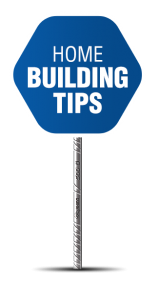Selection and Investigation of the Construction Site
1. General
This section sets out some of the requirements to be considered during site selection for the construction of buildings in order to minimize the risks to the buildings from primary geological as well as secondary seismic hazards such as fault rupture, landslides and liquefaction. A building shall not be constructed if the proposed site is:
- Water-logged
- A rock-falling area
- A landslide-prone area
- A subsidence and/or fill area
- A river bed or swamp area
2. Use of Local Knowledge
It is a good practice during the construction of a building to examine the existing local knowledge and the history of the performance of existing buildings. This will assist in identifying whether there is any danger from inherent natural susceptibilities of the land to the processes of sliding, erosion, land subsidence and liquefaction during the past earthquakes or any other natural/geological processes likely to threaten the integrity of the building. The local practice of managing such hazards, if any, should be judged against the required level of acceptable risk.
3. Site Investigation Requirements
Site exploration shall be carried out by digging test pits, two as a minimum, and more if the subsurface soil condition shows a significant variation in soil type. Generally, the minimum depth of exploration for a building covered by this Guideline shall be 2 m. In hilly areas, exploration up to the depth of sound bed-rock, if it lies shallower than 2 m, should suffice. No exploration shall be required if the site is located on rock or on fluvial terraces (Tar) with boulder beds. The soils encountered in the test pits should be classified as per Table 1.1.
4. Allowable Bearing Pressure
The allowable bearing pressure that can be used is given in Table 1.1 in conjunction with the visual classification of the subsurface soil type.
Table 1.1: Classification of Foundation Soil and Safe Bearing Capacity
| S.N. | Type of Foundation Materials | Foundation Soil Classification |
Presumed Safe Bearing Capacity, KN/m2 |
| 1. | Rocks in different state of weathering, boulder bed, gravel, sandy gravel and sand-gravel mixture, dense or loose coarse to medium sand offering high resistance to penetration when excavated by tools; stiff to medium clay which is readily indented with a thumb nail. | Hard | ≥200 |
| 2. | Fine sand and silt (dry lumps easily pulverized by the fingers); moist clay and sand-clay mixture which can be indented with strong thumb pressure. | Medium | < 200 and ≥ 150 |
| 3. | Fine sand, loose and dry; soft clay indented with moderate thumb pressure. | Soft | 150 and ≥ 100 |
| 4. | Very soft clay which can be penetrated several centimeters with the thumb, wet clays. | Very Soft | <100 |
Buildings can be constructed on hard, medium and soft soils, but it is not recommended to construct buildings on weak soils. Hence, appropriate soil investigations should be carried out to establish the allowable bearing capacity and nature of soil and if required, various measures can be adopted for improvement of bearing-capacity of soils.
Source: Nepal National Building Code, NBC 202:2015, Government of Nepal.


